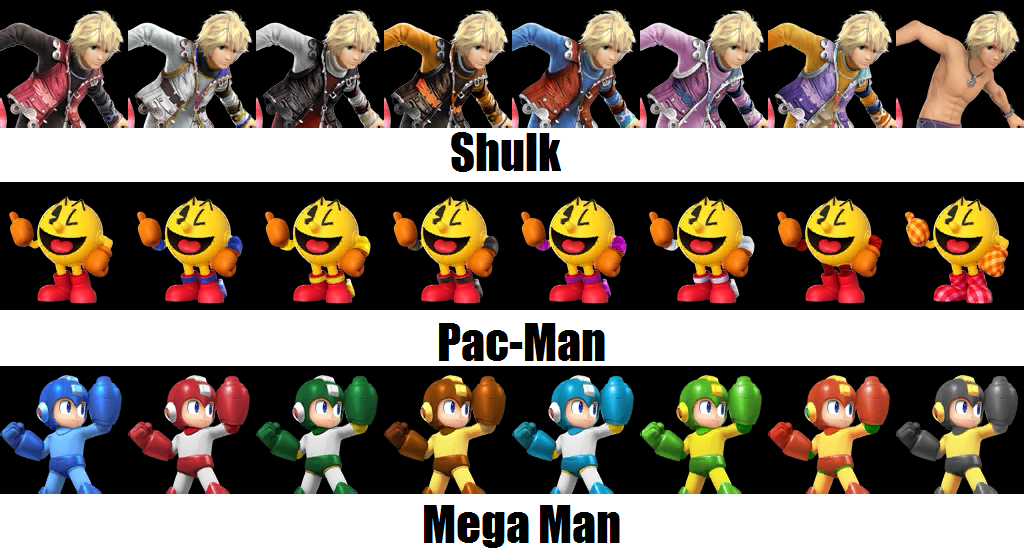

- #SMASH PALETTE SWAP EXPLANATION UPDATE#
- #SMASH PALETTE SWAP EXPLANATION SERIES#
Someone probably already beat me to it, but as long as they haven't, I've decided to try my hand at a Super Smash Bros.-style character reveal for the fat cat himself! Each panel where the game screenshot would usually be is instead a panel from a strip published on the date that each Super Smash Bros. Oh, and the linked depiction of Garfield's palette swaps include ones based off of Odie, Nermal, and Felix the Cat, as well as regular RGB ones and a rainbow pattern.The final smash description itself includes references to " kaiju" (a Japanese term used primarily for giant monsters), Vetvix (the main villain of the comic book-styled Garfield spinoff Pet Force), and Dan Walsh (creator of Garfield Minus Garfield).Likewise, a "Final Smash" is a particularly powerful attack (unique to each character) activated by successfully breaking a floating "Smash Ball". As for the description: each character has four special moves, each activated by pressing a certain button (usually "B") alongside a direction.
#SMASH PALETTE SWAP EXPLANATION UPDATE#
The date given for the fake update is Decemgiven the buffering time, this is likely when the strip was completed (and likely submitted as well).(The Wii U installment is generally coupled together with the 3DS one as simply Smash 4, though this is an unofficial term.) The original game was released on January 21, 1999, Melee on November 21, 2001, Brawl on January 31, 2008, and the 3DS installment on September 13, 2014. However, where four screenshots of gameplay would normally go, the author has instead substituted four comic panels each one comes from the Japanese release date of the first four games in the series.Compare it to, say, the first section of Mario's page.
#SMASH PALETTE SWAP EXPLANATION SERIES#
The image itself is designed after the character pages seen on the Smash Bros DOJO!!, which was the official site for the third game in the series (subtitled Brawl). The title refers to the way the series handles unlockable characters: after meeting a certain criteria, the player is shown a screen with the character's silhouette and the message "Warning! Challenger Approaching!" They then must defeat the challenger in a match to unlock them. If you’ve got an idea for SmashRadar, or really want to keep this theme discussion rolling, head on over to our Smash Bros.The entirety of this comic is a reference to Super Smash Bros., a popular series of fighting games that include several characters from separate Nintendo franchises (as well as a few from other companies). Next week, we’ll have coverage of GameStop's Brawl championships following this weekend’s tournament. This was originally suggested as “Up the Creek without a Paddle,” but when you add ass-kicking to the mix, it’s more like king of the mountain- but with a creek instead of a mountain. The Payoff: It’s a lot harder than it looks. Special Rules: Stay on the slanted ground and DO NOT use Up B moves. The Payoff: Settling once and for all which is more irritating: 1) “PIKA!” or 2) “PK THUNDER!” Special Rules: Lightning-based attacks only. The Payoff: Treating Sheik as a separate character from Zelda. Special Rules: Same deal as Classic Mode, but with Zelda doing nothing or fleeing while Ganondorf tries to KO her. Stage(s): Melee Stage- Temple or Bridge of Eldin You know you’ve been playing the game way too long when youtry this theme and actually spend time figuring out who’s marrying who and devising a plot to explain why you’re suddenly putting the smackdown on your bride/groom-to-be.Ĭharacters: Link, Ganondorf, Zelda, (Sheik)





 0 kommentar(er)
0 kommentar(er)
